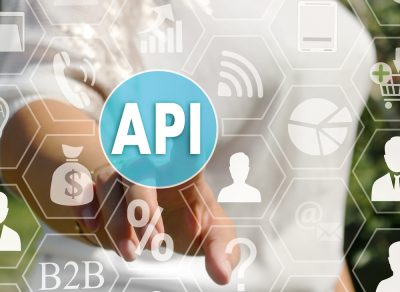Although
some insurtechs may experience difficulties and even fail, the majority are
adjusting to guarantee success.
Contradictory
Information
There are
distinct reasons for the failure of insurtechs, such as plummeting share prices
and unsustainable underwriting ratios of public insurtechs like Root, Lemonade,
and Oscar. Private insurtech valuations have likewise dropped with other
technology markets around the world. As a result of money issues, many
insurance companies had to downsize their workforce significantly. With
inflation continuing to be a concern and interest rates rapidly increasing,
insurtech players have had no other choice but to collaborate if they want to
stay ahead of the game. Due to these circumstances, it’s not surprising that
this industry has been deemed fragile by even those in the know.
In 2022, the
insurtech industry experienced a substantial decline in investment compared to
previous years – dipping by nearly 50%, from $15.8 billion down to an
unprecedented low of only $7.98 billion as reported by Gallagher Re’s Q4
analysis. Even more astonishingly, funding for the last quarter was 57% lower
than that of Q3: plummeting from its high of $2.35 billion to a shocking low of
one billion dollars!
While many insurtech companies remain small, there is a handful that have achieved real success. These firms boast desirable loss ratios, practical unit economics, and rapid growth rates – all hallmarks of sound businesses. By taking an unbiased look at the current landscape it becomes clear that despite different market conditions than ever before, insurtechs continue to find ways to succeed.
Investing
versus Impact
It’s an interesting
paradox that the progress of insurtech has recently been centered on funding
and valuations, with much attention being paid to “unicorns”
(companies with a value higher than $1 billion) or even some
“decacorn” companies ($10 billion).
As the year
2021 progressed, many investors had become concerned about the lack of revenue
and EBITDA from various insurtechs, especially when coupled with exorbitant
customer acquisition costs. Realizing that cheap money and over-inflated
valuations have led to a bubble in the economy, these apprehensions eventually
became reality as they burst into full view. In the past, it was believed that
new startups could exponentially grow and make a profit by simply obtaining
more capital. Today though, real success for companies in the market relies
heavily on revenue, expansion rate, customer reachability, margins, and EBITDA
– especially when discussing young insurers.
Battling Through the Insurtech Maze
Making the
dialogue around insurtech even more complex is its dual usage to denote two
distinct types of firms:
- Technology-driven
start-ups and budding businesses are revolutionizing the insurance industry
with innovative solutions.
- Companies
that have exclusively built and launched whole digital ecosystems with new
technologies, selling, and servicing insurance are denoted as “pure
play” businesses.
Even though
the second group has not achieved as much commercial success as its
counterpart, many commentators have carelessly grouped them all together under
one umbrella term: insurtechs. Shockingly, this categorization includes
thousands of players.
It’s
essential to understand what is included in the definition of insurtech. Many
people think that only digitally native companies make up this sector, but a
large percentage consists of providers and facilitators who rely on existing
insurance firms for support. This demonstrates how collaboration between
traditional insurers and tech solutions is driving major advancements in the
industry.
At first
glance, the newer digital insurance companies promise to revolutionize the
industry; however, it is
these more established players who prove themselves to be smarter and faster.
Looking back now reveals that many of those involved with insurtech were not
truly ‘disruptors’ after all – they spent countless hours perfecting their
operations and building robust business models above all else to provide
outstanding service for customers.
Despite
their high aspirations, it has become apparent that most “full stack”
insurtechs have not attained the success level of their founders and investors.
Selling insurance profitably is an arduous task they soon discovered. As
inflation rises, these companies are typically unequipped to withstand this
added strain – technology alone won’t be enough to conquer this obstacle.
Numerous
other “insurtechs” have already earned tremendous success or are on
the path to achieving it, because of producing profitable solutions and
developing an effective marketing strategy for traditional insurance
businesses. This procedure itself is incredibly intricate.
Unparalleled
Insurtech Triumphs
As the
rapidly expanding insurtech industry continues to grow, some of its most
lucrative sectors include cyber risk/insurance, distribution, and embedded
insurance. Moreover, through specialized telematics-driven connected devices
and automated damage estimating capabilities we are now able to conduct virtual
claims inspections as well as support digital customer interactions.
Furthermore, aerial and geospatial underwriting solutions paired with
e-payments for billing can also be used in predictive analytics such as fraud
detection or streamlined claim workflow management.
Furthermore,
the development of innovative insurtechs is on the rise through their
utilization of blockchain technology and virtual/augmented reality.
Uniting Forces, Platforms, and Exchange Opportunities
In the face
of a dwindling market, insurtechs are using inventive strategies to gain
traction and foster growth. Three key beneficiaries of this shift in the strategy
include collaborations, platforms, and insurance technology bazaars.
Insurtechs
can maximize their value to customers through the development of personalized
platforms, or vendor hubs. These capabilities are not only cost-efficient and
quick to deploy but also save time in comparison with building them from
scratch internally.
During the
last twelve months, insurtechs have taken advantage of the potential
collaboration opportunities with marketplaces – a digital platform where
insurance companies can access multiple-point solutions and services. By
leveraging these marketplace partnerships, they were able to grow their
presence in the industry and establish comprehensive offerings.
Remain
Attentive to Profitability
The
insurtech industry has seen an exponential increase in funding over the past
decade. According to Boston Consulting Group’s report, $15 billion of equity
investment was allocated from 2012-2019; however, that amount doubled during
2019 alone and is expected to grow even further throughout 2020-2021.
Even though
the achievements of insurtechs can no longer be merely calculated by capital
received, Venture Capitalists are still some of the most well-informed
investors and their judgment holds a great deal of power–especially in this
current unstable economy. Therefore, we continue to take heed when they choose
to make an investment.
During the
first two months of 2023, Digital Insurance’s investigation discovered more
than twenty insurtech funding events. These companies and their respective
amounts include Ushur ($50M), Wefox ($455M), OpenEyes ($18M), Floodbase ($12M),
Flock($38M), EvolutionIQ ($33.1M) Goose ($4 M), Joyn ($17 M) and BOXX ($14.4
Million).
Merger
and Acquisition
For
InsurTechs in need of funds but unable to secure more capital, mergers, and
acquisitions can be a sound approach. Founders and investors may experience
reduced ownership as an outcome, yet this ensures that staff stays employed and
their concept can reach fruition while still earning from the combined
business’ success. Lemonade’s takeover of Metromile is one such narrative
illustrating how effective consolidation can truly be.
Plunging
into the Future
The
insurtech revolution has sparked a wave of innovation and pushed for meaningful
change in the insurance industry, prompting major companies to set up venture
capital funds to provide these inventive startups with monetary support. This
investment is allowing new technologies to be developed that will help offer
customers across the globe life-changing solutions.
To remain
relevant and competitive in this digital age, insurers have made considerable
investments toward modernizing, automating, and digitizing their core
processes. This is due to the understanding that they cannot succeed by
themselves anymore; instead, these companies are now taking advantage of the
potential benefits brought about by teaming up with insurtechs. Nowadays it’s
no longer enough to rely solely on legacy technology – businesses must be
willing to innovate beyond their own walls if they wish to stay ahead.
We shouldn’t
misinterpret the sluggishness of insurers to accept and implement changes as a
sign that they’re not interested in transformation. It’s typical for insurance
companies to take their time before seeing success from their transformation
efforts; however, Insurtechs and the wider industry rely on each other, and
this reliance will only become stronger as change management initiatives begin
taking off.
As we look
to 2023, legacy insurance carriers can capitalize on their available options
such as investing in innovative technology and recruiting top talent at a reasonable
cost. This will undoubtedly position them ahead of the competition and drive
long-term growth.
Insurance
companies and investors understand the great worth of tech-enabled startups,
particularly insurtechs, due to their contributions to job creation and
economic growth. To illustrate this point: recently Silicon Valley Bank
obtained a guarantee from the federal government that all depositors—startups
included—would not suffer any losses because of certain events. Though this was
at first quite concerning for many individuals involved in these businesses,
numerous insurtechs have assured customers and shareholders that ultimately no
damage will be done to it.
Although
some insurtechs may struggle or even fail in this challenging environment, the
majority are successfully weathering the current climate and preparing for a
thrilling next step of development. Even amidst these trying times, the
movement is still thriving and rapidly transforming.











